| 1 | Long-nosed snake |
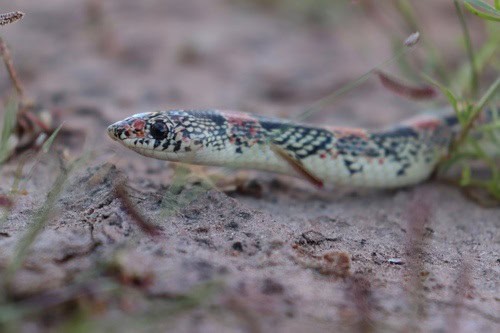
Snakes are often divided into the broad categories of venomous and constricting, but there’s also a swathe inbetween with miscellaneous tactics. The long-nosed snake of northern Mexico and the parched southern US is one of several that simply pins its prey to underground tunnel walls. This snake lives in semi-deserts, dry grassland, and especially dry shrubland, and is a burrow invader which winds through underground tunnels in search of small lizards and occasionally mammals to eat. They’re guided by scent, and either find the chamber where an exhausted lizard is sheltering, or get lucky and find one running around the wide tunnels.
The long-nosed snake then springs into feeding mode, reacting in milliseconds. They pounce on their prize, but rather than tightly constricting, they pin their prey to the wall, using all the force they can muster. The initial wall slam doesn’t necessarily kill the lizard or mouse, and there’s a strong chance they could wriggle free. But if all goes to plan, the long-nosed snake will have its meal, without any venom, just pure acrobatic skill. It’s like venom is a modern invention which they have no patience for, and they’d rather just pin things down like the good old days.
Long-nosed snakes are harmless to humans, lacking even a mild venom. When confronted, they angle their colours towards your face to trick the unaware into thinking they’re coral snakes.
| 2 | Ladder snake |
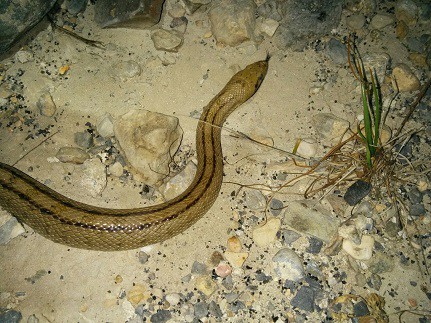
The ladder snake is a 100-150cm species of Spain, which moves slowly the vast majority of the time, except for when it lunges to pin a small mouse to a tunnel wall. This burrow invader lives in dry countryside areas, and is sometimes encountered by nature enthusiasts crawling along dry stone walls (the snake that is).
Ladder snakes are non-venomous, but have a vicious bite when confronted by humans, and resist any attempt to pick them up. Their hunting strategy is to fleck their tongues for mammal scents, and eat them as they sleep, or track one through the tunnels and pin it to a wall. Ladder snakes are very accurate; there’s a chance that a mouse might wriggle free from their grip, but they’d have to get very lucky.
Snakes may have no limbs, but they have surprisingly high control over each area of their long body, allowing them to pin creatures accurately. Although not confirmed (seeing as these underground battles are rarely observed), they almost certainly gain skill with age. For example, spitting cobras are usually wild and inaccurate with their sprays as hatchlings, but gain precision after a few years. Ladder snakes mostly prey on mammals, with 5-15% of their calories coming from birds.
| 3 | Grey beaked snake |
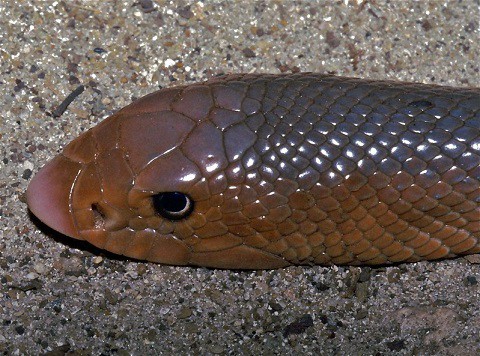
This expert wall pinner lacks even a mild venom. They’re a creature of Ugandan woodlands and savannahs, and usually loll out a dark black tongue to intimidate their enemies when cornered. Their diet consists of mice and rats, and to find their next meal, they’ll search far and wide, including in dark burrows. The grey beaked snake enters a subterranean world, guided by subtle scents, until the first small mammal finally comes into view. They then pin them to the wall and swallow whole. Grey beaked snakes have been found with 4 mice in their belly at once.
It’s extremely important for grey beaked snakes to pin their prey as soon as possible. A mouse’s best hope of survival is to use its agile reactions to dart to the side before the snake makes contact. It’s do or die, and they have just milliseconds to react.
If a mouse gets pinned, their chances of survival plummet, not to zero, but somewhere close. Over the ages, grey beaked snakes have likely gained sharper reactions themselves, to combat these agile mice. But they sometimes meet one which is a cut above the rest and harder to pin down. This is what we assume, as Scaphiophis albopunctatus is a relatively poorly researched snake. Pinning mammals to burrow walls is one of the few hunting facts we know.
| 4 | Gopher snake |
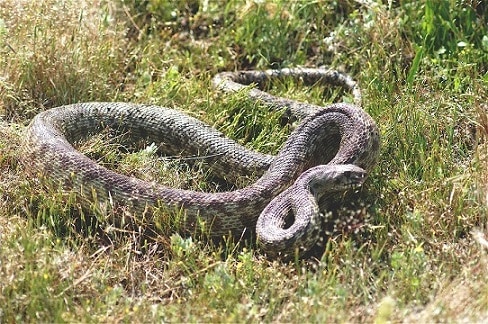
The gopher snake is one of the most shameless invaders of mammal burrows. They reside in the fields, woodlands and plains of the western USA, and are non-venomous, though quite vicious when they meet humans. The gopher snake has a heavy taste for mammals, and will stop at nothing to ambush them. If that means searching through burrow networks, they won’t hesitate. Gopher snakes are constrictors, but their movements are restrained while underground. Therefore, if a gopher snake sees a mouse, it will instantly pin them to the burrow wall, holding them in place, with a move practised over many years, honed to razor efficiency.
To do this, have a larger arena than you might think. These burrows probably measure no more than 20cm, but to a snake they’ll look as a large as a mine tunnel or a hidden WW2 bunker. If a vole leaves the safety of its nest chamber, then it knows that a giant snake could be around any corner. It’s a labyrinth, and deciding the right way is essential. Otherwise, they could end up pinned to a wall so fast that there’s no time to comprehend what’s happening.
The same is true for the snake itself. To humans, basilisks are creatures of mythology, but to voles in a tunnel, every snake probably looks as large as a basilisk. It’s debatable whether mice have the intelligence to pick up a small stone, throw it in the opposite direction, and distract the blinded snake with the noise. The only advantage small mammals have is knowing their burrows like the backs of their hands.
| 5 | Woma python |
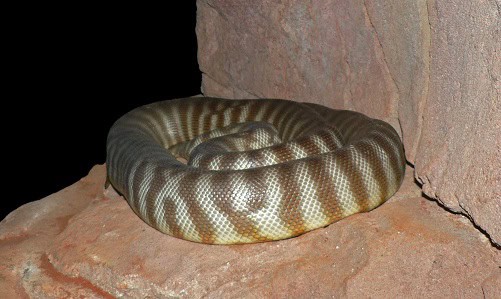
The woma python, or simply woma, is a creature of the Australian outback, occurring in pockets all over the barren centre to Shark Bay on the west coast. They’re recognisable by faded striped patterns, a bulky head and large eyes, and are no danger to humans, unless you poke your finger into their mouth.
The woma python is rarely seen climbing trees. They prefer to travel downwards, entering the earth’s crust through burrow entrances carved by rodents. When they find a loose mouse scurrying around them, they reveal why they’re part of the brutal side of nature: they seize the mouse, pin it to a wall, angle their mouth correctly, and swallow them whole. The woma python takes care to pin its prey very precisely, so that they don’t slip free.
Escape isn’t the only thing they have to worry about. Rats or mice can also attack, biting through a snake’s scales, gnawing on its body like a block of cheese. A woma python might fight through the stinging pain, determined to acquire its meal, but rodents are vicious enough to kill snakes if accurate. The snake might be forced to back off and go hungry for another day. Many adult womas have visible scars from these gnawings, which last for the rest of their lives.
| 6 | Louisiana pinesnake |
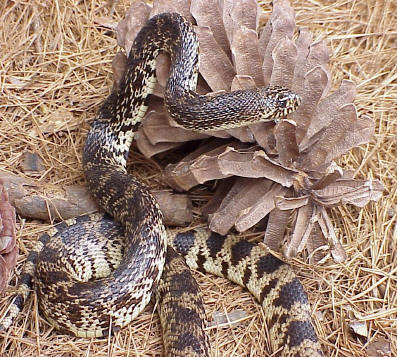
Part of the same Pituophis family as the gopher snake. Louisiana pinesnakes also pin their prey to burrow walls (which scientists call “pinioning”), but this time, they’re highly targeted towards one prey: the pocket gopher. Louisiana pinesnakes are highly endangered, and inhabit only western Louisiana and extreme east Texas. They’re dependent on longleaf pine habitats, which are steadily shrinking except in protected pockets. Louisiana pinesnakes love to invade burrows in these forests, disappearing into dark tunnels in pursuit of the gophers which forge them. Louisiana pinesnakes have a permanently hungry expression, and are more acrobatic than they look. When a gopher comes into view, they can defy expectations and pin it to a wall instantly.
Louisiana pinesnakes carefully maintain the pinning pressure until they unhinge their jaws and swallow. This species lacks any venom, not even a mildly venomous saliva, and all their evolutionary focus has gone into muscular strength. As usual though, they’re not infallible. Louisiana pinesnakes are much longer than the mammals they’re trying to pin, giving them less wiggle room.
Gophers also have far more detailed knowledge of the tunnel networks. If the snake isn’t careful, their prey might slip into a side passage, which is far too narrow for them to fit down. The disappointed pinesnake would have to reverse all the way out of the burrow, cursing its luck. The pocket gopher, meanwhile, would be panting in its dark chamber of safety, realising just how close it came to its doom.
| 7 | Mandarin ratsnake |
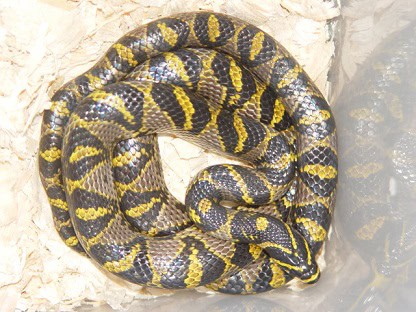
A 100-140cm snake native to southern China, where it enjoys truly spectacular views, or would do if it wasn’t so keen to invade underground burrows. Mandarin ratsnakes are rarely seen, as they mostly lurk in subterranean tunnels. Most captured by humans still have particles of soil clinging to their scales. They’re timid in the presence of people, but show no such fear amongst their underground mammal prey.
The Mandarin ratsnake likes to pin rodents hard to a tunnel wall, after crawling through the passageways slowly and undetected. They then take just seconds to rearrange and swallow, giving the mouse a tiny window to escape. All their focus must be towards agility, as Mandarin ratsnakes lack even a mild venom in their saliva. As ever, they can spring into life extremely quickly, as though they’ve saved all their energy for this one pinning.
Such snake-mammal duels can take place near the entrance or deeper within the tunnels. It wouldn’t be surprising if the resident ants and earthworms came out to secretly watch. Some might crawl past, staying silent, hoping that the brawling snake doesn’t notice them. A crowd could gather, with many interested worm heads poking out of tiny gaps in the tunnel walls. The snake probably has many moves as well, such as a tail sweep, or a straightforward body slam to act as a finisher. Likewise, the cornered mouse might throw in a wall kick, or even a backflip. This is all pure speculation of course, as Mandarin ratsnakes aren’t well researched, aside from the burrow pinning basics. One day, we could witness these battles properly, when cameras become tiny enough to be placed in mice burrows by scientists.
| 8 | Common kingsnake |
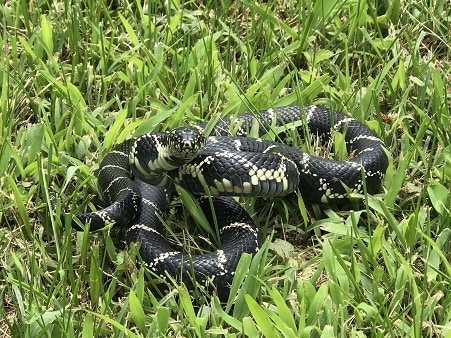
This ubiquitous eastern US snake has many hunting tactics: ambush, chasing down, crushing constriction with several coils. However, it’s equally skilled in the primitive art of pinning a mouse very hard to a tunnel wall, and rearranging itself to swallow.
Common kingsnakes are non-venomous, and usually flee or vibrate their tail against leaves when they meet humans. They’re commonly hunted by birds on the surface, making burrows both a sanctuary and hunting ground. Common kingsnakes have super sensitive smell, to compensate for the darkness of tunnels. They possess a wiry strength, which belies their relatively thin bodies. As a whole, kingsnakes are significantly stronger than US ratsnakes. This enables them to slam mammals down with a force which is extremely difficult to escape from.
The only downside to this brute strength is potentially collapsing the tunnel wall. There’s no guarantee that every burrow is completely solid. If a common kingsnake accidentally selects a fragile wall, then pinning a mouse against it could leave both buried in a calamitous mound of soil. After shaking its head free of dirt, the snake might find that its mammal prey is gone. The snake could then decide that it’s too risky to carry on, and reluctantly retreat to the surface, empty-handed. Particular favourites of the common kingsnake include Ord’s kangaroo rats and hispid cotton rats.
| 9 | Calabar burrowing python |
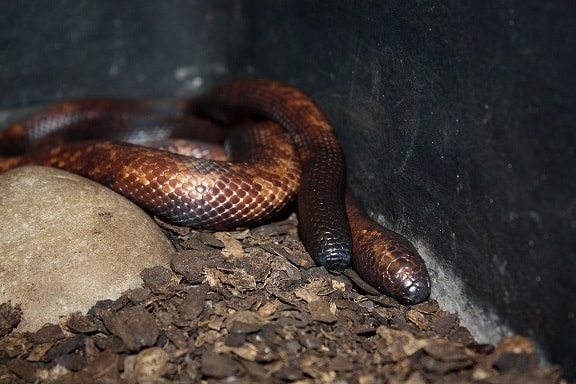
An evolutionary relic of a snake, which is the sole member of its family, and actually closer to the boas. Calabar burrowing pythons live in central western Africa, particularly Nigeria. This non-venomous snake searches actively for prey rather than ambushing, and this quest often leads them into burrows.
Calabar burrowing pythons have been observed eating the Temminck’s mouse and the ubiquitous black rat, with mammals comprising 80% of their diet. The Calabar burrowing python disables its prey the hard way. Cobras have neurotoxins which can paralyse mice in seconds, but this leathery snake prefers primitive grab and pin strategies. It rams a mouse towards the tunnel wall, holding it down using all its scaly, sinewy strength.
The last thing the mouse sees will be a honeycomb pattern of gold and black scales. That is, unless a sudden instinct to live awakens inside them, and they dash to the side using superhuman speed. If the mouse succeeds, they have several choices: they could duck under the snake’s body, or they could clamber over its head, using its scales for handholds, before dropping down the other side and making a desperate dash for safety, with a furious hiss behind them which they don’t dare turn around and look at for even a second. Calabar burrowing pythons are technically constrictors, but are relatively clumsy at it – hence the burrow pinning strategies.
| 10 | Middle American indigo snake |
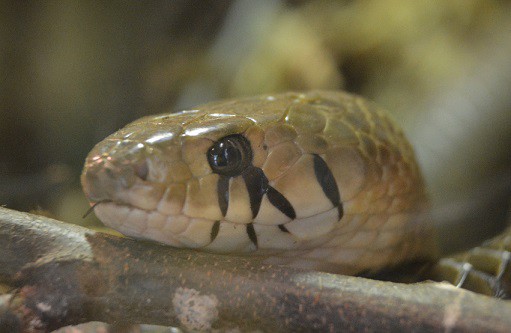
A common snake which inhabits most of Central America, into far southern Texas. This species inhabits forest and field alike, anywhere with soft soils and burrows which it can invade. The middle American indigo snake disregards venom, and sticks to the tried and tested business of pinning its prey to an underground burrow wall. Its diet is varied, with mammals making up the largest share, plus a side helping of rattlesnakes. They use similar methods to gopher snakes, pinning with a loose coil while angling their head round in order to swallow. Drymarchon melanurus is non-aggressive towards humans, but to large rats, they’re a bogeyman.
The Middle America indigo snake has very fast reactions for a creature that normally slithers at moderate speeds. However, they’re not infallible, and things don’t always go according to plan. The snake might pin its prey slightly off centre, or the wall the rat is pinned to might be slightly uneven. This affords the animal just the slightest opening it needs to wriggle with all its might, and burst free with adrenaline surging through its body, the rodent scurrying away rapidly while the snake struggles to rearrange itself.
If a snake always used the same burrow, then it would be different, as they would know every nook and cranny inside out, like a golfer and his favourite course. However, indigo snakes must follow scents, and are constantly drawn to all-new burrows. Each one is an unfamiliar obstacle course, which they must rapidly get to grips with, if they want any chance. Another unfortunate event could be when smells lure them in, but the burrow is long vacated. The scents are old ones which have accumulated over many months, which snakes are extremely sensitive to. The Middle American indigo snake slithers into unfamiliar burrows without any fear whatsoever.